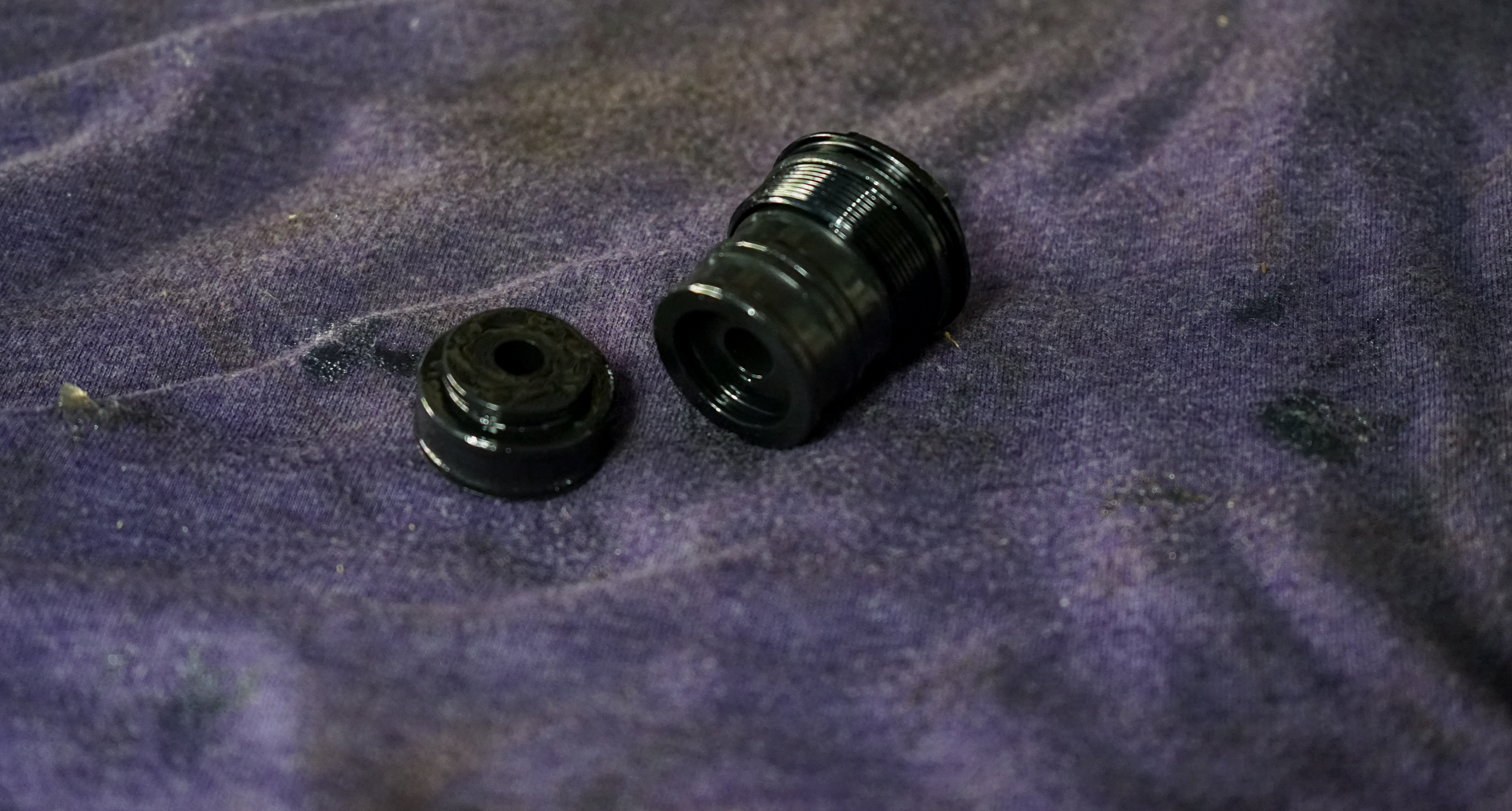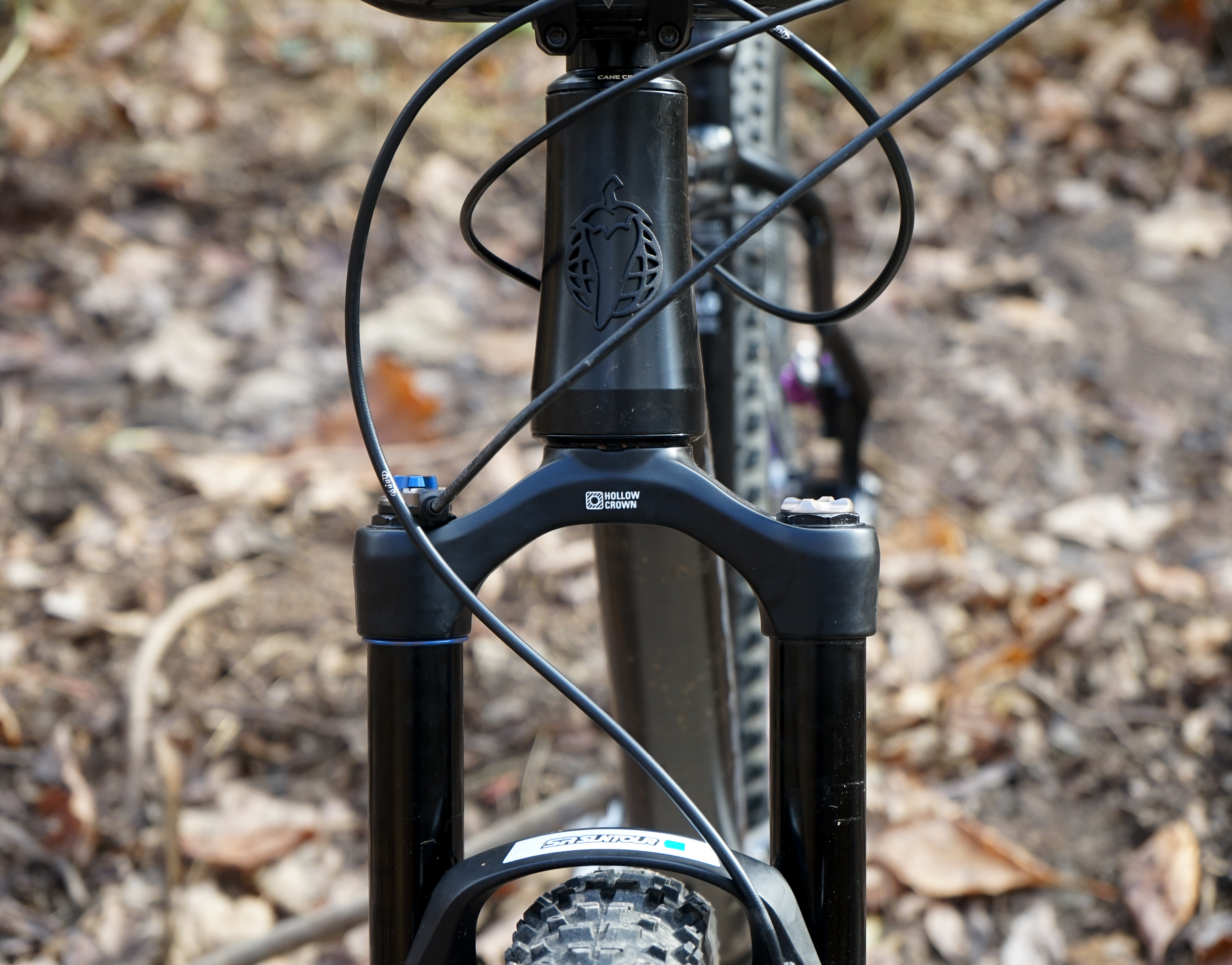Review: SR Suntour Axon34 WERX and Elite
Originally posted on November 25, 2019 at 0:17 amIt may come as a surprise to hear that SR Suntour is the largest bicycle suspension fork manufacturer in the world. Even though this recognition is primarily due to targeting the OEM of entry-level and budget mountain bikes, SR Suntour has been quietly refining the company’s high-end suspension forks for the past decade.
SR Suntour may not be the loudest player in the room, but kudos to the company for remaining committed to delivering innovative suspension that’s easy to service wrapped up into an affordable package. Times are changing, and SR Suntour is fully capable of going toe-to-toe with powerhouses.

THE FORKS
We have the cross-country oriented SR Suntour Axon34 WERX Boost in 100 millimeters of travel, which retails for $1,100. Then, we have the Axon34 Elite Boost in 120 millimeters of travel, which retails for $700. Both forks offer travel adjustment between 100 and 120 millimeters in 10-millimeter increments and have 34-millimeter diameter stanchions.
The primary difference between the two forks is the WERX is considered the crème de la crème and sports a carbon crown and steerer as opposed to the aluminum found on the Elite. Additionally, the WERX utilizes a slightly lighter 7000 series aluminum in the stanchions versus the Elite’s 6000 series aluminum. Both offer the same magnesium lowers and closed cartridge damper with remote lock-out.
We won’t focus on the e-bike side of the equation throughout the review, but it should be noted that the Elite is e-bike ready, whereas the WERX is not.
100 mm, 110 mm, 120 mm travel
34 mm stanchions
RLRC-PCS closed-cartridge damper
Air Sprung
Post mount 180 mm
1.5” tapered, carbon
Clearance for some 29 x 2.6” tires
1,722 grams (with compression plug & axle)
$1,100
100 mm, 110 mm, 120 mm travel
34 mm stanchions
RLRC-PCS closed-cartridge damper
Air Sprung
Post mount 180 mm
1.5” tapered, Al alloy (CTS)
Clearance for some 29 x 2.6” tires
1,799 grams (with star-nut & axle)
$700
CONSTRUCTION
New for MY2020, the Axon34s receive the Equalizer (EQ) air spring on the left side of the fork. The EQ system replaces the fixed coil spring with a negative air spring providing a more personalized tune and allowing the whole system to be lighter. With an air spring, the system will automatically balance the negative spring as the positive spring is pressurized, similar to how most dual air forks work. The primary downside to the new system is that it’s no longer as simple as adding or removing a spacer to adjust the amount of fork travel. Now, to adjust the fork travel, a travel-specific negative air shaft is required.

Beneath the air spring cap, three rubber volume spacers are added or removed to alter the end-stroke ramp-up.

On the right side of the fork is SR Suntour’s Piston Compensator System (PCS) damper platform with an RLRC-PCS cartridge. The Remote Lock-out Rebound Compression (RLRC) is the remote lock-out version and includes 10 clicks of low-speed compression tuning and 10 clicks of rebound adjustment. Unlike forks from RockShox and Fox that use an open bath system, the PCS platform is a closed-cartridge system that relies on an integrated piston separating the air and oil, resulting in more consistent and predictable damping performance. Not only is the system simple, but it also meets the company’s mantra of refined simplicity by providing a platform that’s easily serviced without the use of proprietary tools.
To keep everything feeling like butter, both the air and damper chambers have a generous amount of light grease applied to the springs and bushings. Basic maintenance is simple as pulling the lowers, cleaning the stanchions, letting the seals soak in synthetic oil like 0W-20, and applying fresh grease like Slickoleum or Slick Honey.

A carryover item is SR Suntour’s unique Q-LOC2 quick-release thru-axle system. Diving straight in and ignoring the instruction tag, it took me a few moments to figure out how this little bugger works, but after that, this thing is the dirty dangles. Both the Elite and WERX models come stock with the Ti Q-LOC2 quick-release that weighs 71 grams.
THE RIDE
To properly test the forks, I sought a few different quick loops that offered a good mix of features like punchy-ups, tight “S” corners and roots. By doing this, I could complete a few hot laps, return to the vehicle, and swap forks on the Salsa Timberjack hardtail.

Setting up a suspension fork for the first time is a bit of a process, and the Axon34 is no different. Tinker around with the volume reducers and air pressure, fine-tune the damping and rebound settings and sometimes repeat until the preferred setup is found. Be sure not to go ham-fisting on the rebound and damping controls. I found that a single “click” is a noticeable change with both SR Suntour forks.

For my 165-pound weight, I settled on 75 psi inside the air chamber giving me 25% sag. With all three volume reducers installed, and since the fork had a remote lock-out, I opted to run the low-speed damping on the lighter side for standard cross-country trails.

As I bolted through a series of roots running parallel across the singletrack, the first thing I noticed was how buttery smooth the Axon34 was off the top. It felt like the fork floated over the natural speed bumps. Quickly after the roots, the trail starts making its way upwards in the punchy city-park fashion. Standing up out of the saddle to stay on top of the singlespeed gearing, I was greeted with a reasonably supportive midstroke considering the LSC setting. Making my way towards the freeride-oriented trail, I added two clicks of LSC damping and hit the 3-foot-ish wooden drop. Buttery smooth. On to the second drop, it’s a bit higher and longer, the Elite at 120 millimeters handled it just fine going through its full travel, absent of any harsh bottom out. The WERX at 100 millimeters of travel handled the drop a bit more harshly, to no surprise. I could tweak the volume reducers and firm the fork up but at the cost of sacrificing its small bump sensitivity. I suspect this drop is on the outskirts of its current configuration.
One surprise I found with both SR Suntour forks was how much stiffer the chassis felt compared to the Fox 34 Step-Cast. Looking at the two brands side-by-side, I don’t see anything overly noticeable in the crown construction, and both are utilizing 34-millimeter stanchions, but the added stiffness gave the Axon34 a more solid feel in tight corners.

The remote lock-out is a nice touch that I didn’t experience any overly ill feelings towards even with the more cluttered cockpit. The simple thumb lever to engage and lateral finger lever to disengage is a clean setup that works well. Depending on the setup and component choices (lock-on grips, brakes, etc.), there is potential for things to get complicated in finding the optimal placement. Unfortunately, doing away with the remote lock-out is not as simple as other brands and would require an entirely new damper cartridge.

Bonus features include a fender with proper mounting. Forget about needing cheap plastic (though resourceful) zip-ties; SR Suntour includes an injected molded fender that attaches via four screws for a simple and durable solution.
FINAL THOUGHTS
Based on my time aboard the Axon34s, SR Suntour is putting some serious innovation and performance into the company’s high-end suspension. Sometimes I tend to extend the hours between fork maintenance, but with the SR Suntour, it’s as simple as taking five minutes to remove the lowers, clean and re-lube. It’s hard not to keep up basic maintenance when it’s that easy.
The Axon34 WERX is a reliable lightweight option that’s comparable in weight to the Step-Cast 34. However, my vote is going to the Elite. For $340-$400 less than the WERX and Factory Step-Cast with remote lock-out, the Axon34 Elite allows you to keep more cash in your pocket. The fork offers a similar level of performance to both the WERX and Step-Cast, includes a remote lock-out and comes with a minimal weight penalty.
If you’re still stuck in your little bubble of it not being a Fox or RockShox, remember that Tracey Hannah secured the overall Women’s Elite DH UCI World Cup title on her preferred suspension platform, an SR Suntour.
Words & Photos by Scott Williams